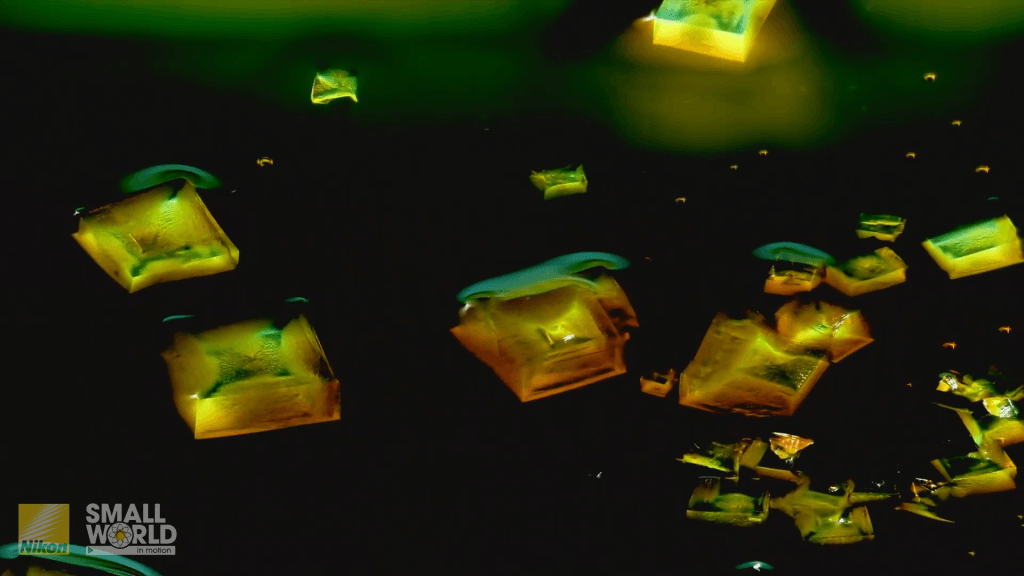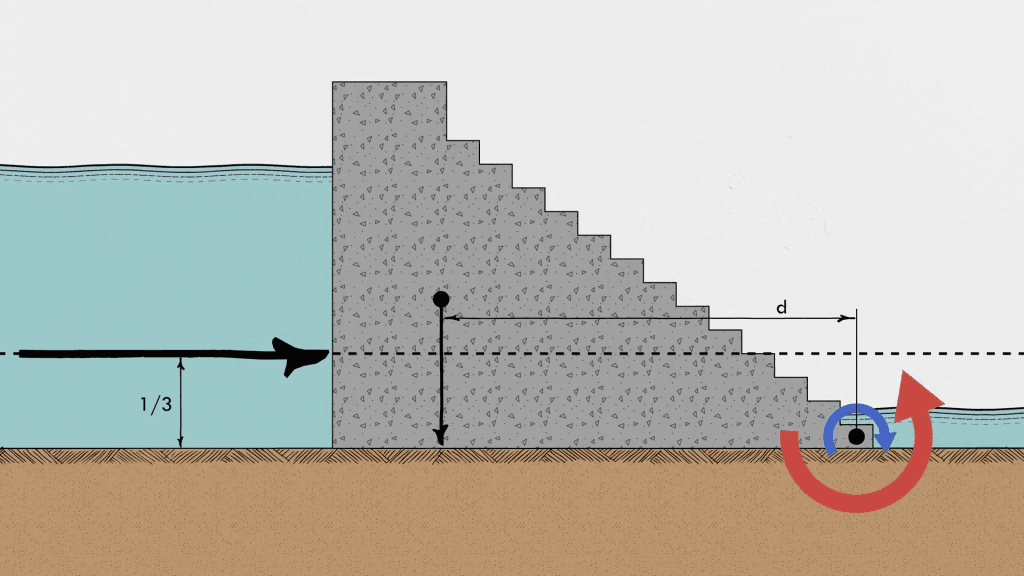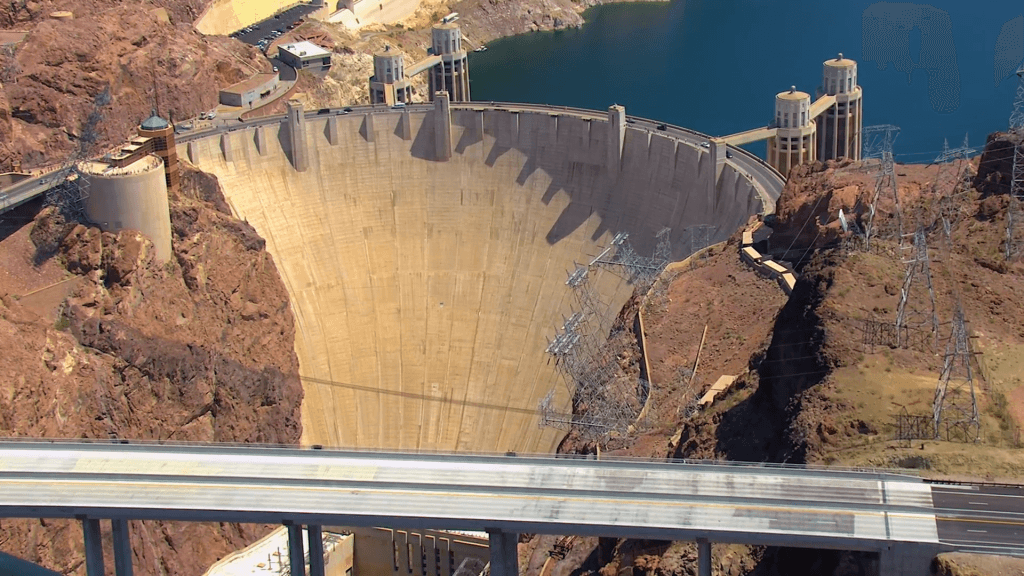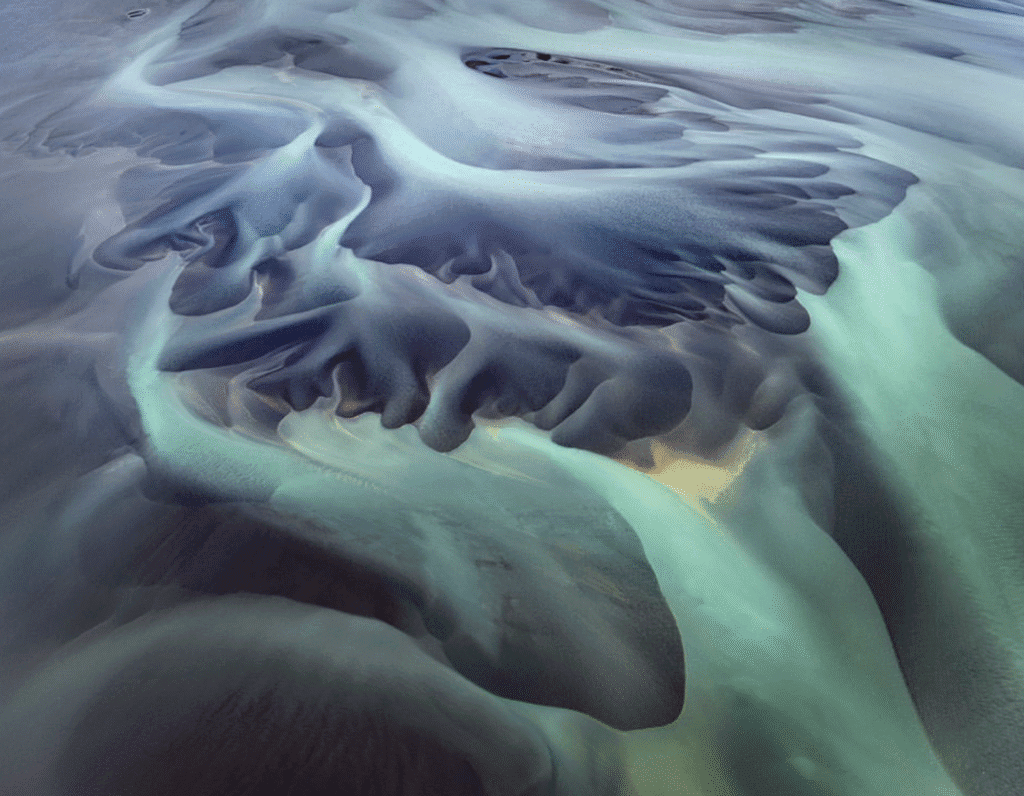Look beneath the waves on a beach or in a bay, and you’ll find ripples in the sand. Passing waves shape these sandforms and can even build them to heights that require dredging to keep waterways passable to large ships. To better understand how the sand interacts with the flow, researchers build computer models that couple the flow of the water with the behavior of individual sand grains. One recent study found that sand grains experienced the most shear stress as the flow first accelerates and then again when a vortex forms near the crest of the ripple. (Image credit: D. Hall; research credit: S. DeVoe et al.; via Eos)
Author: Nicole Sharp

Growing Salty
Ngangla Ringco sits atop the Tibetan Plateau, breaking up the barren landscape with eye-catching teal and blue. This saline lake sits at an altitude of 4,700 meters, fed by rainfall, Himalayan runoff, and melting glaciers and permafrost. The lake, like many inland bodies of salt water, has no outflow. Instead, water evaporates from the lake, leaving behind any salts that were dissolved in it. Over time, those left-behind salts build up and make the lake ever saltier. (Image credit: NASA; via NASA Earth Observatory)

Sand Dikes Can Date Earthquakes
When a strong earthquake causes liquefaction, sand can intrude upward, leaving behind a feature that resembles an upside-down icicle. Known as a sand dike, researchers suspected that these intrusions could help us date ancient earthquakes. A new study shows how and why this is possible.
Using optically stimulated luminescence, researchers had already dated quartz in sand dikes and found that it appeared to be younger than the surrounding rock formations. But that information alone was not enough to tie the sand dike’s age to the earthquake that caused it.
The final puzzle piece fell into place when researchers showed that, during a sand dike’s formation, friction between sand grains could raise the temperature higher than 350 degrees Celsius. That temperature is high enough to effectively “reset” the age that luminescence dates the quartz to. Since the quartz likely wouldn’t have had another reset since the earthquake that put it in the sand dike, this means scientists can date the sand dikes themselves to determine when an earthquake occurred. (Image credit: Northisle/Wikimedia Commons; research credit: A. Tyagi et al.; via Eos)

Liquefaction in Earthquakes
In an earthquake, sand and soil particles get jostled together, forcing any water between them up toward the surface. The result is liquefaction, a state where once-solid ground starts to behave much like a liquid. Buildings can tip over and pipelines get pushed toward the surface. In this video, a geologist shows off some great demonstrations of the effect, including ones that can be easily done in a classroom with younger kids. (Video credit: California Geological Survey)

Dissolution and Crystallization
A colorful assortment of salts dissolve and recrystallize in this microscopic timelapse video by retired engineer Jay McClellan. Every step is a gorgeous rainbow of color as the cobalt, copper, and sodium chlorides dissolve, mix, and change. Though we don’t see what’s going on in the water, fluid dynamics are a critical component of both dissolution and crystallization. In the former, concentration gradients change the water’s density, driving buoyant flows. For the latter, crystallization comes out of evaporation, where surface tension often determines where solid particles get left behind. (Video and image credit: J. McClellan; via Colossal)

Flettner Rotors Spin Anew
In the 1920s, the world saw a new sort of marine propulsion, ships with one or more tall, smokeless cylinders. These Flettner rotors, named for their inventor, would spin in the wind, generating lift to propel the boat, much as a sail would. (The difference is that the rotor uses the Magnus effect.)
The market crash that kicked off the Great Depression spelled an end to the rotorship, but the idea is getting revived as industries search for greener forms of ship propulsion. Although the Flettner rotor still uses fuel (to spin the rotor), it can complete a voyage on only a small fraction of the fuel needed for conventional propulsion. (Image credit: Getty Images; via PopSci)

The Forces on an Arch Dam
Although they’re iconic, arch dams like the Hoover Dam are relatively unusual. In this Practical Engineering video, Grady looks at the forces a dam needs to withstand and where and why an arch dam is useful. It’s a good reminder that even water that (for the most part) isn’t moving is still a challenge to deal with. (Video and image credit: Practical Engineering)

Predicting Sea States
Transferring cargo between ships and landing aircraft on carriers requires predicting how the waves will behave for the next few minutes. That’s a notoriously difficult task for several reasons: rough seas can hide a ship radar’s view and the inherent nonlinearity of ocean waves means that they can occasionally coalesce unexpectedly large (“rogue“) waves, seemingly from nowhere.
A new study describes a technique for improving sea state predictions. In their model, the team first use multiple radar returns to average out gaps in the current wave state data, then feed that interpolated data into a prediction algorithm that includes nonlinearities up to the third-order. The results, they found, gave far better predictions than current techniques, some of which had errors 3 times as high. (Image credit: R. Ding; research credit: J. Yao et al.; via APS News)

Zoom Into the Sun
Fall into our nearest star in this gorgeous high-resolution view of the Sun. Taken by Solar Orbiter, a joint NASA-ESA mission, the image stretches from the fiery photosphere — full of filaments and prominences — to the wispy yet unbelievably hot corona. It’s well worth clicking through to zoom in and around the full size image. (Image credit: ESA & NASA/Solar Orbiter/EUI Team, E. Kraaikamp; via Gizmodo)

Icelandia
Photographer Rosita Dimitrova describes Iceland as “an absolute heaven” for aerial photography like this featured image. This plethora of images from Dimitrova and fellow IAPOTY finalists backs up that sentiment. The landscape wears its influences openly; it is shaped by water, ice, wind, and lava into stunning abstract shapes like these. (Image credit: Various/IAPOTY; via Colossal)





















